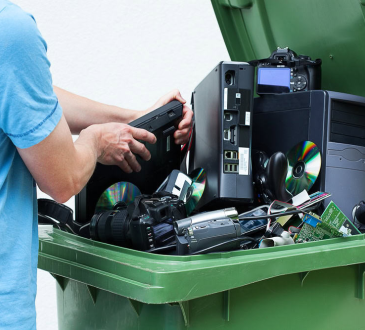
Xilinx is a company that makes a range of different programmable logic devices, and it is perhaps best known for being the inventors of the FPGA technology. Field Programmable Gate Arrays are now a hugely important part of a number of different machines and have applications in medicine, construction, manufacturing and other fields.
Xilinx manufactures many different FPGAs, each intended for different uses. The EasyPath is intended to be an affordable option for those working up to volume production, the Virtex series is a high-performance FGPA, and the Spartan series is a high-volume FPGA. Each of the FPGA families that Xilinx made has gone through several iterations, to improve performance and capacity.
The Spartan Family
Spartan FPGAs are designed to be a low-cost solution for high-volume applications. They are made to have a low power footprint, and they are a popular choice for the manufacture of set-top boxes, wireless routers, displays, and other consumer devices. The Spartan 6 iteration is based on a 45-nm 9-metal layer, and it makes use of dual-oxide process technology. Xilinx marketed the Spartan-6 to the automotive industry, and also for use in wireless communications, video surveillance, and as a compact option for flat-panel displays.
The Spartan-7 was released in 2017, and it uses the same 28nm processes that Xilinx chose for their other boards, however unlike the Artix family, it lacks high-bandwidth transceivers.
Xilinx are committed to promoting the Spartan brand, and the Spartan-6 devices will be available for shipment until at least 2027, which means that they are a good choice for long lifespan products. There is a six-week lead time on the boards, and they are supported with ISE tools for Windows 10.
Spartan-6 devices have attractive specification, including:
– Improved I/O connectivity thanks to a generous ratio of pin-count to logic
– In excess of 40 I/O standards, for a simplified system design
– PCI Express support
– Up to 8 serial transceivers that are low power, and 3.2Gb/s
– 800Mb/s DDR3
– Integrated memory controller
– Easy to expand I/O
– Two core voltage options (1.2V and 1.0V)
– A hibernate power-down mode which is zero power
– ISE Design Suite for Linux and Windows
The Spartan-7 range is similar, but massively upgraded. It is much newer, so the end-of-lifecycle dates aren’t confirmed yet, and it offers some significant performance upgrades, being 30% faster than the older 45nm generation. It is powered by the Vivado HLx Design Suite and block-level design tools.
Learning the Spartan Family
Learning to use the Direct Components Inc x Xilinx Spartan can be quite a challenge, especially for those who are not familiar the principles of FPGA development or those who come from a background of software development. There are a lot of tools and guides on the Xilinx website that will help people to learn the basics, and there is a good knowledge base too. The video tutorials will explain the design and development suites and offer help with how to handle timing and resource issues and other challenges.
Cost-Optimized FPGAs
The Spartan FPGA family was developed in 1998, and over the last 20 years each iteration has built upon and improved the boards. These small form factor boards offer the perfect solution for medical systems, and for the Industrial Internet of Things. The boards are designed to offer the best balance between footprint, cost and performance.
The 28nm HPL process that is used in the 7th generation boards were developed by Xilinx in conjunction with TSMC, and it provides a low power consumption solution, aimed to serve a highly specific market. These compact FPGAs offer I/O performance and controlled power consumption, while fitting into a small form factor. The boards are flexible and can operate at two different voltages so that users can choose between high performance or low power consumption depending on the use case. The 28LP process that other competing FPGAs use has a narrower operating window, which means that Xilinx’s 28HLP offers better versatility and a better power/performance metric.
Logic Structure for FPGAs
All FPGAs have a core logic structure. The logic cells are used to perform a range of functions. The Spartan 7 has a configurable logic block that contains slices which themselves have look-up-tables, registers and carry chains. Each slice can be configured to perform any one of a large range of functions. Over time, the Spartan family has grown in complexity. The CLB that was in the very first Spartan device featured one 3-input look up table, two 4-input tables and just two registers. Fast-forward to the Spartan 7 and you will see that the device has eight 6-input LUTs and sixteen registers.
Spartan 7 LUTs can be configured, too – either to be one six inputs Look up table with a single output, or to be two 5-input LUTs each with their own output. The LUT can then be registered as a flip-flop. Four Look up tabless, and eight flip-flops, constitutes a slice. Two slices are a CLB.
Audio and Video
Today, audio and video are hugely important. To manipulate such data, one needs high-speed mathematical performance. The Spartan-7 is capable of processing such data thanks to the DSP tiles, which can operate at frequencies of 550Mhz.
The Spartan-7s also have configurable 36Kb blocks of memory, which are called block RAM. Each of these can be used to support a different mode of operation. The block RAM can either be used as a 36Kb block, split into two 18Kb blocks which operate independently, or combined to make a 64Kb (or bigger) RAM. There are 120 block RAMs on the board, which equates to 4.2Mb of storage on-chip. There is also some separate distributed RAM, which gives a total of 5.3Mb spread across the whole FPGA.
Xilinx FPGAs are one of the industry standard today, and it is well worth engineers and developers learning how to use them. There are learning and prototyping boards available that are based on the architecture, and that provide a valuable opportunity for those who would like to learn how to work with one of the most important FPGAs on the market today




